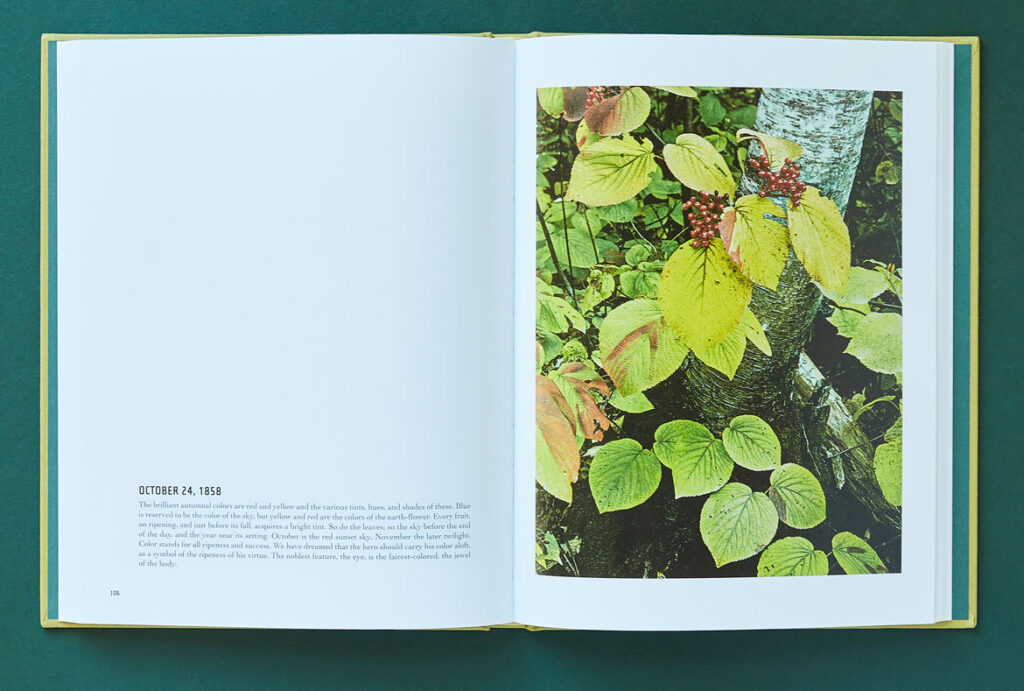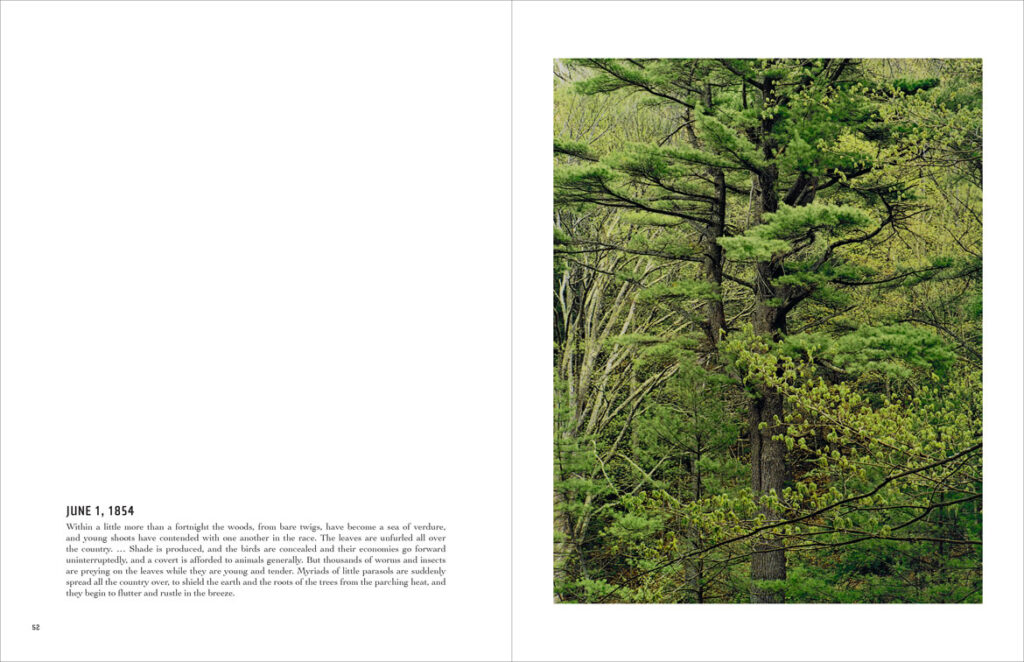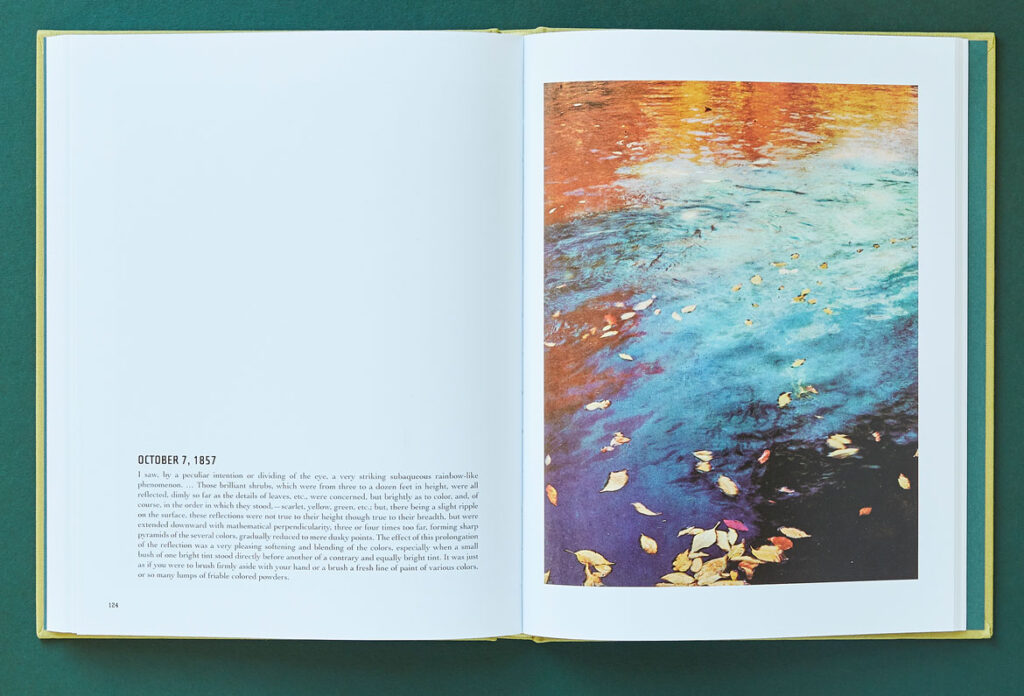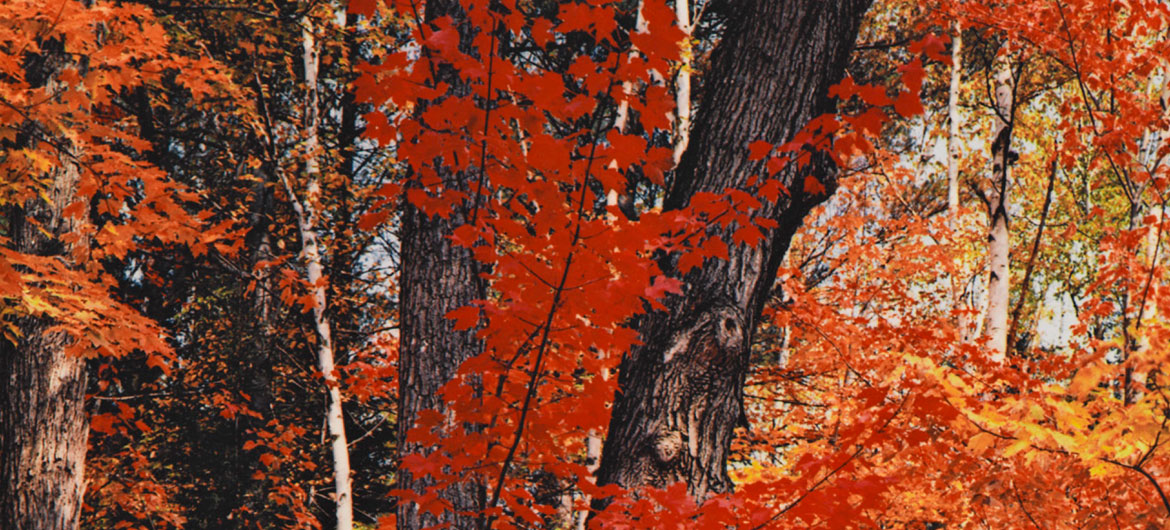The title of Eliot Porter’s first book of photography, “In Wildness Is the Preservation of the World,” was a quotation from the 19th century Transcendentalist author Henry David Thoreau of Massachusetts. These words “tell what Thoreau discovered 100 years ago, that a leven of wildness is necessary for the health of the human spirit, a truth we seem to have forgotten in our headlong rush to control all nature. Unless we reverse our course all wildness will disappear from the American continent,” Porter wrote in the preface.
Long out of print, the 1962 book has been republished by Chronicle Books. “The finest series of photographs ever made to illustrate texts by Thoreau,” Brooks Atkinson wrote in The New York Times in 1963. The book pairs quotations from Thoreau with Porter’s photos of New England wilds. Originally published by The Sierra Club, the book marshaled the beauty of Porter’s images and Thoreau’s words as activism for wilderness preservation.
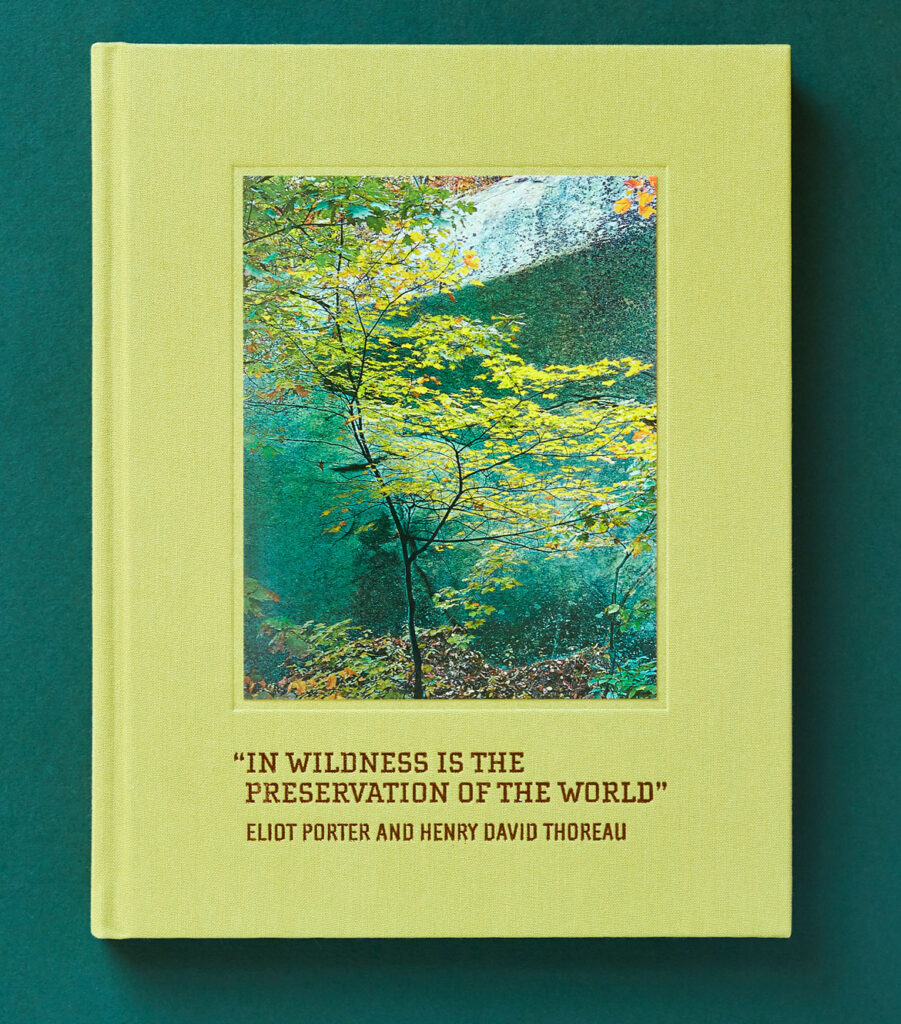
“In a sense this book began when my father bought an island in Maine nearly half a century ago,” Porter wrote in the preface. He was born into a well-to-do family in Winnetka, Illinois, in 1901. His father, an architect, businessman and amateur biologist, bought Great Spruce Island in Penobscot, Maine, as a summer vacation home in 1910. “To a young child reared far from the sea, as I was, our summer island was a reservoir of inexhaustible knowledge and adventure,” Porter wrote in his 1966 book “Summer Island: Penobscot Country.”
Porter (1901-1990) began taking photos in 1913, with a Kodak box camera given to him by his parents for Christmas. He earned a degree in chemical engineering from Harvard University in 1924, followed by a degree in medicine from Harvard’s Medical School in 1929. He taught biochemistry at Harvard and Radcliffe College from 1929 to 1939. After exhibiting black and white landscape photos at photographer, gallery operator and tastemaker Alfred Stieglitz’s An American Place gallery in New York in 1939, Porter devoted himself to photography full time.
Porter became a pioneering photographer of birds—photographing birds each spring for five decades. He constructed wood towers next to trees so that he could photograph down into nests. Sometimes he cut the branch holding the nest off—and lowered it to a height he found more convenient to his efforts, Paul Martineau reports in the 2012 book “Eliot Porter: In the Realm of Nature.” Porter employed strobe lamps synchronized with his camera’s shutter so that he could freeze tiny moments of time to capture the speedy birds.
Porter hoped to publish a book of his bird photos. The editor-in-chief at Houghton Mifflin suggested he photograph the birds in color. So Porter became a pioneering color photographer—beginning to specialize in color in 1939. The renowned landscape photographer Ansel Adams would call him a “master of nature’s color.”
But when Porter returned to Houghton Mifflin with full-color photos of birds, the editor said color photos would be too expensive to publish. Instead, Porter exhibited them at New York’s Museum of Modern Art in 1943. He didn’t get the bird book published until his 1972 “Birds of North America: A Personal Selection.”
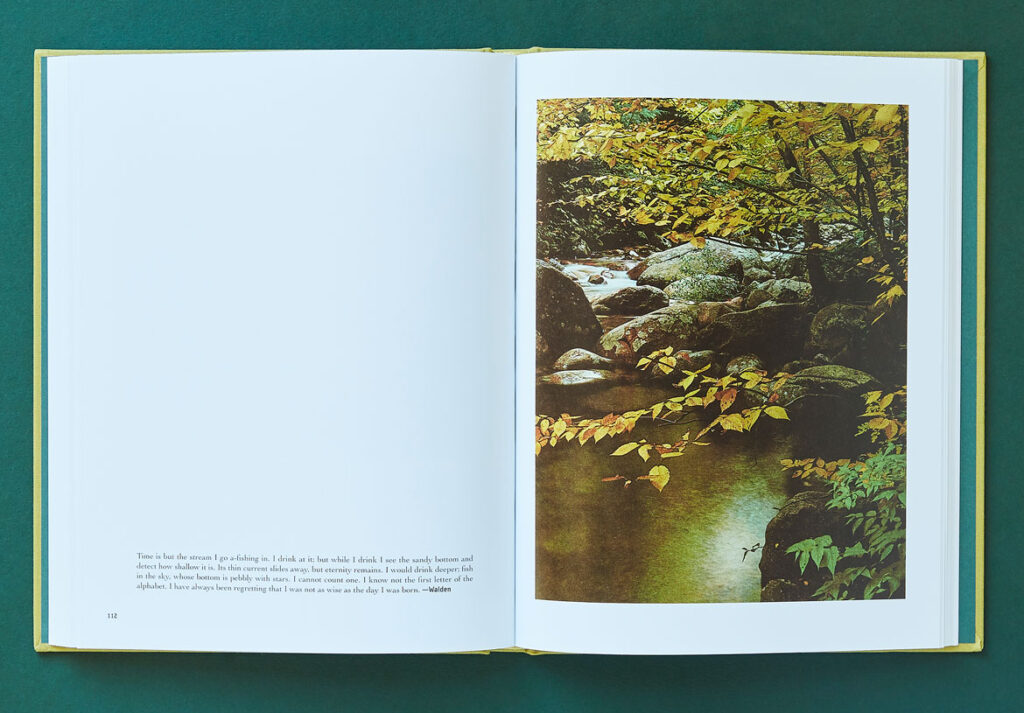
After World War II, as Porter “became seriously involved with Thoreau’s work,” his second wife, the painter and sculptor, Aline Kilham, “suggested I do a book on Thoreau. My photographs, she thought, were like his writing.”
Porter began to focus on Thoreau’s commentary on “man’s relation to nature. … I hoped to be able to compliment in feeling and spirit Thoreau’s thinking 100 years ago, and to show the peril we face even more today by our ever faster destruction of life not our own.”
Porter had moved to New Mexico, but over a decade of photographing in New England, he produced a group of photos he called “The Seasons.” He still had trouble finding a publisher, due to “their limited interest and its unlimited cost.” So he arranged exhibitions, beginning in Santa Fe. Eventually the Smithsonian Institution turned it into a traveling exhibition. Nancy Newhall, a curator who’d shown Porter’s color photos of birds at New York’s Museum of Modern Art in 1943, introduced him to Sierra Club Executive Director David Bower, with the idea that the club might publish the book—and so it did. (Bower also eventually suggested the book’s title quotation.)
“In Wildness Is the Preservation of the World” is organized by the seasons, spring to winter. Photos of icy shores, bare trees, and violet and green skunk cabbage give way to a herd of caterpillars and pink and white and yellow flowers blossoming in forests. Summer offers green ferns, waterlilies blooming white and yellow, moths and birds, pink and saffron lichen, a stream tumbling over boulders, a nest full of screaming baby birds. In autumn, ferns fade to brown and tree leaves turn brilliant red and orange and gold. Winter fills the woods and fields with white snow.

“We need the tonic of wilderness,” Porter quotes Thoreau from “Walden.” “…At the same time that we are earnest to explore and learn all things, we require that all things be mysterious and unexplorable, that land and sea be infinitely wild, unsurveyed and unfathomed by us because unfathomable. We can never have enough nature. We must be refreshed by the sight of inexhaustible vigor … We need to witness our own limits transgressed, and some life pasturing freely where we never wander.”
Porter eschews wide landscape vistas in favor of close-ups, details, carefully framed scenes. And rather than the hierarchical compositions of most modernist photography, he favors lyrical overall compositions inspired by abstract expressionist painting.
“Mr. Porter’s eye is less for the grand sweep,” Brooks Atkinson wrote in The New York Times in 1963, “than for details of running water, iridescent pools, rock walls, rock textures, caverns, violent twists of sandstone, lichens, willows, leafy trees. He looks for the grand truth in the minute. It is the color that conveys the grandeur. Purples, blues, reds, yellows, oranges—all of them overlaid with metallic brilliance—compose natural beauty of overwhelming vitality.”
“In Wildness…” was first of 25 books of photos that Porter would publish. The Sierra Club invited Porter to do a book about Glen Canyon along the Colorado River to support their efforts (ultimately unsuccessful) to stop the construction of a hydroelectric dam there.
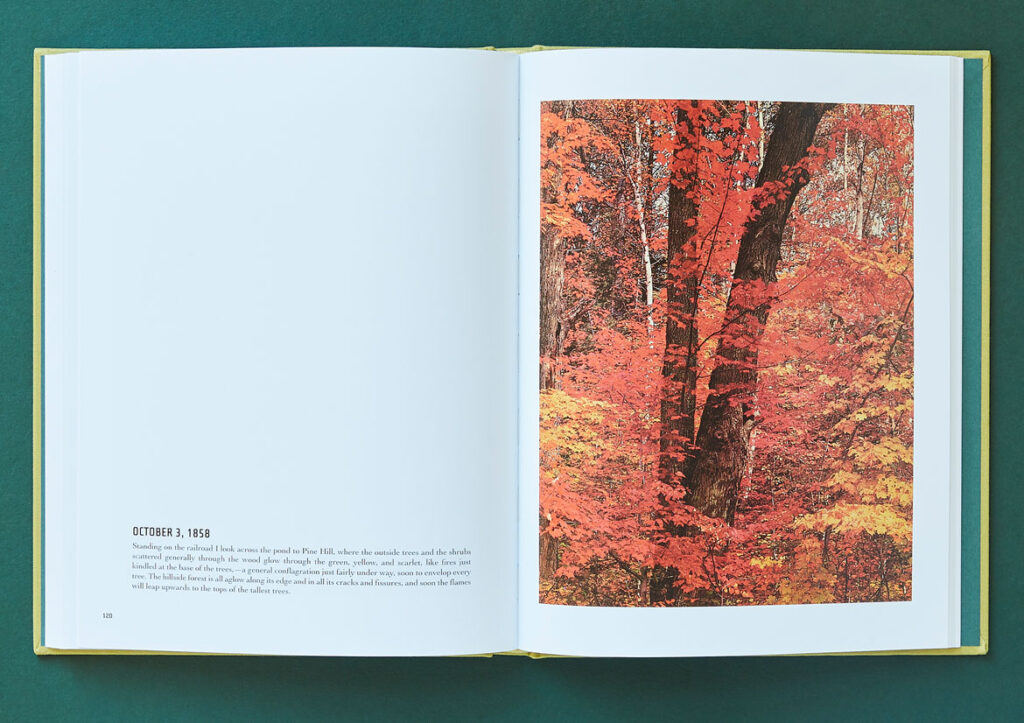
Via his relationship with Sierra Club, upon whose board of directors he served from 1962 to ’68, Porter became an activist photographer, using his photography to advocate for wilderness preservation. Though he would say, “Although my photographs may be used in this way, it is incidental to my original motive for taking them, which is first of all for personal esthetic satisfaction.”
In 1964, the Sierra Club’s Bulletin explained why the organization got into publishing photo books: “Roughly three-fourths of them are bought by nonmembers. Through these books, we frequently introduce the heathens to pay for their own conversion—and in due course to start paying dues.” And reviews of the books helped spread the organization’s environmental message.
“The trouble is that conservation becomes a cliche,” Porter told The New York Times in 1969. “You have to get people to take it seriously. When a reputable scientist says our air may become unbreathable in a decade or so, nobody believes it. Right now, everybody can breathe, so they’re not concerned.”
If this is the kind of coverage of arts, nature, cultures and activisms you appreciate, please support Wonderland by contributing to Wonderland on Patreon. And sign up for our free, (hopefully) weekly newsletter so that you don’t miss any of our reporting. (All content ©Greg Cook 2021 or the respective creators.)
